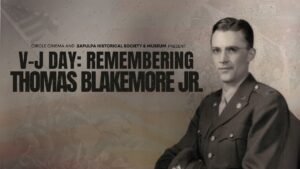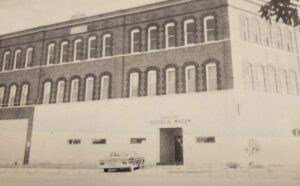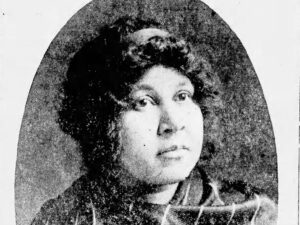Rachel Whitney
Curator, Sapulpa Historical Museum
Joseph R. Holmes joined the staff at Sapulpa High School as principal in 1919. Holmes would be appointed to be the next school superintendent in 1924. He had attended Hendrix College, alongside his predecessor, Superintendent J.R. Barton. Barton had transferred to Okmulgee in 1924. In 1928, Holmes would, also, transfer to the Okmulgee school system.
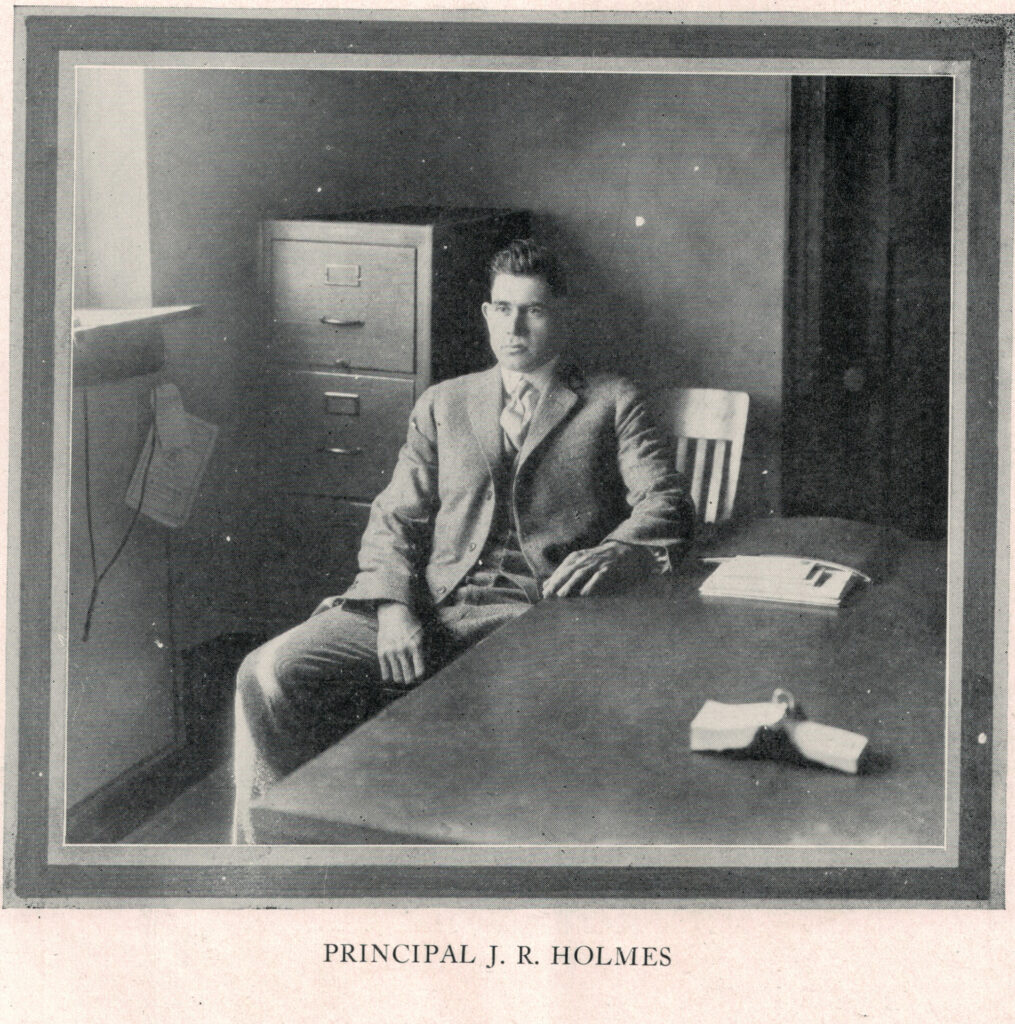
In the 1920s, the athletic director was Virgil Jones; he led the athletes on the field as Sapulpa Sappers or the “Blue and White machine.” As the principal in 1923, Holmes heard the news from Jones that the football team had been on probation for violating recruitment rules. Portrayed as “rule breakers,” Holmes agreed to the name change to the “Sapulpa Outlaws.” Jones and Holmes acknowledged the reputations they hold, and wanted Sapulpans to be the “best of the best.”
Jones, from Kendall College in Tulsa, knew how to take on Sapulpa’s rival, Tulsa Central. He would carry the athletic department to “supremacy.” “Coach Jones, the man who has made possible for Sapulpa High the winning of so many championships in the last three years, and has turned out some wonderful athletic teams.”
The Sapulpa Outlaws had many victorious seasons from 1923 to 1927. The final year being known as the Outlaws, a new field would be built and dedicated in the name of the educator. The new Holmes football field was dedicated in October 1927.
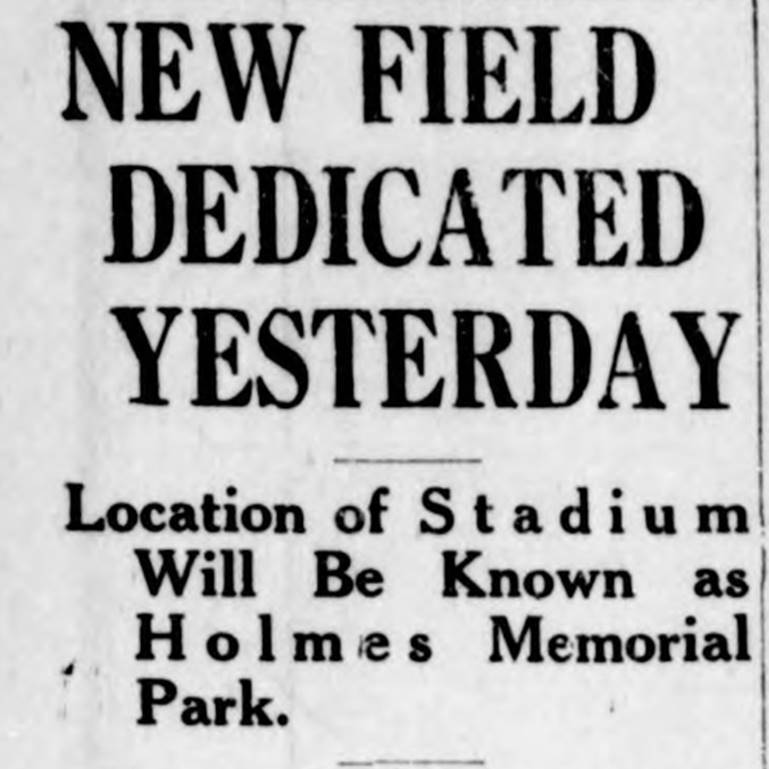
“The field is one of the finest high school athletic grounds in the state. Its dimensions are 600×320 feet. In addition to the gridiron, the field can be used for baseball and track events. Sapulpa is one of the few high schools in Oklahoma which can boast a stadium of its own. Appreciation of the new field and athletics in Sapulpa was shown by the large crowd attending the dedicatory game.”
The Sapulpa Outlaws faced off against McAlester. “The game was better than the final score indicates.” A crowd filled the bleachers and jammed the sidelines. “The Sapulpa Outlaws christened their new athletic field with a 20-6 loss.” By halftime, McAlester had kept Sapulpa from scoring, going into the locker room, 20 to 0.
The last home game of that season under the new Holmes Field was against Bristow. Often Bristow and Sapulpa would face off during the week of Armistice Day, or Veterans Day. “On the Holmes Memorial Field, Bristow took them to a drubbing of 31 to 7.” Bristow had a fine team that season. Sapulpa was the second team that season that was able to score on Bristow. Sapulpa “scored on the Bristow eleven, and the opposing team is known over the state for its sturdy lineup.”
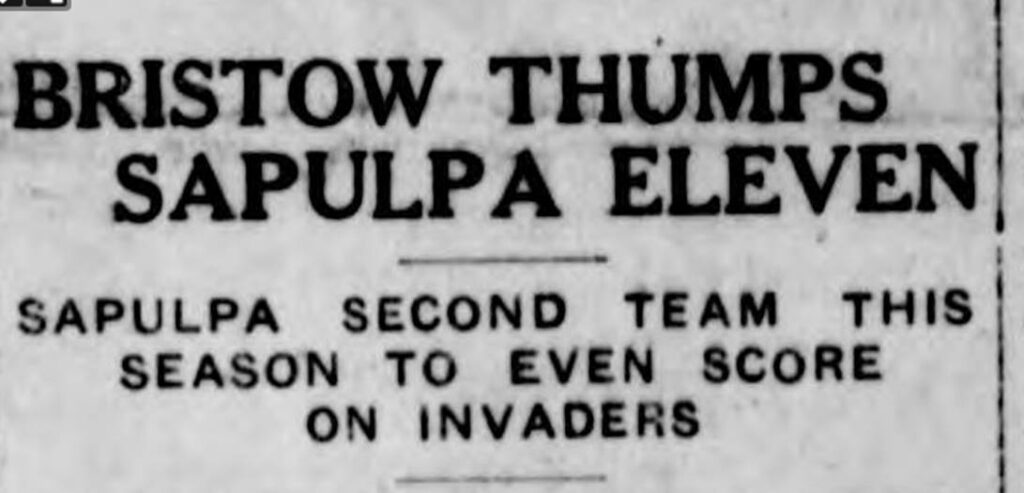
Additionally, in 1928, the name changed in the athletic department. It came from the 1928 seniors during a contest; Sapulpa High School mascot became the Sapulpa Chieftains. A senior named Pauline Page is credited to the name change.
The first night game for the Chieftains stood under the lights facing their rivals, Tulsa Central, in September 1929. In the first match of the season, Tulsa Central came to Holmes Field. “The game was a hard fought battle for both sides.” Due to Sapulpa injuries, the Chieftains couldn’t hold off the winning touchdowns. The Chieftains would lose the game 13 to 0.
This week in history, Booker T. Washington High School football team would, also, play its first night game at Holmes Field on October 22, 1931. “The flood lights will be turned on at Holmes Memorial Park at 8 o’clock for the Booker T. Washington-Harlinsville football tilt. This is the first night game which Booker T. team has played at the Holmes Park gridiron.” It was a wet game, but a crowd came to watch the Sapulpa team. Due to some injuries, Booker T. Washington lost the game to Harlinsville 6 to 0. It was a scoreless game until the final quarter.
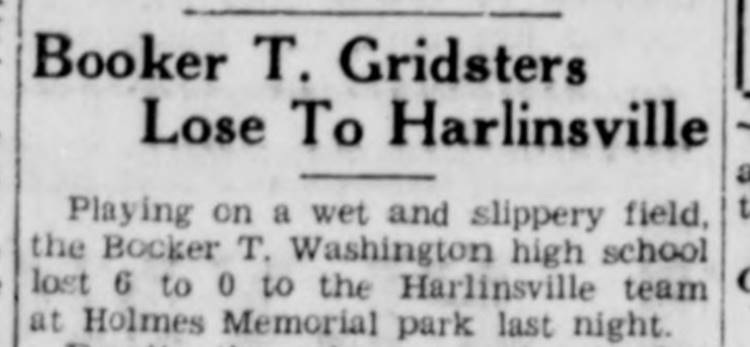
In September 1942, a new field house would be open. “The new native stone structure is equipped with locker rooms for both the local grid squad and visitors. Shower rooms, a coach’s instruction room, ticket offices, and other conveniences are incorporated in the new building. The field house is pictured as an answer to a long-felt need by the athletic department of the high school. It was constructed under the supervision of the WPA, Works Progress Administration.”
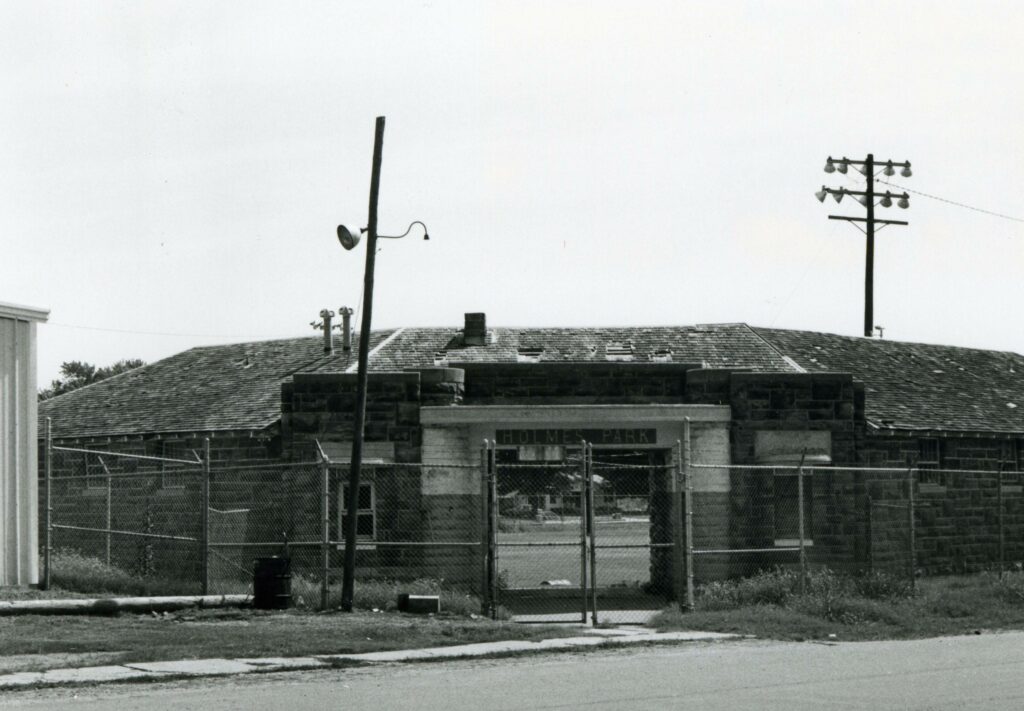
This week in history, Holmes Field had installed new lighting and additional seating to the stadium in 1946. The new lighting doubled the old by adding thirty-two more 1500-watt bulbs. It increased the seating capacity to 3,000 people.
Throughout its history, Holmes Park held many events, celebrations, and pageants. One of the most well-known was the “Sapulpa Story” during the Golden Jubilee of Sapulpa, or 50th anniversary of the cityhood. Many churches, organizations, and students participated in the retelling of the Sapulpa history. Even with the rain delay, “it was a smash-hit.”
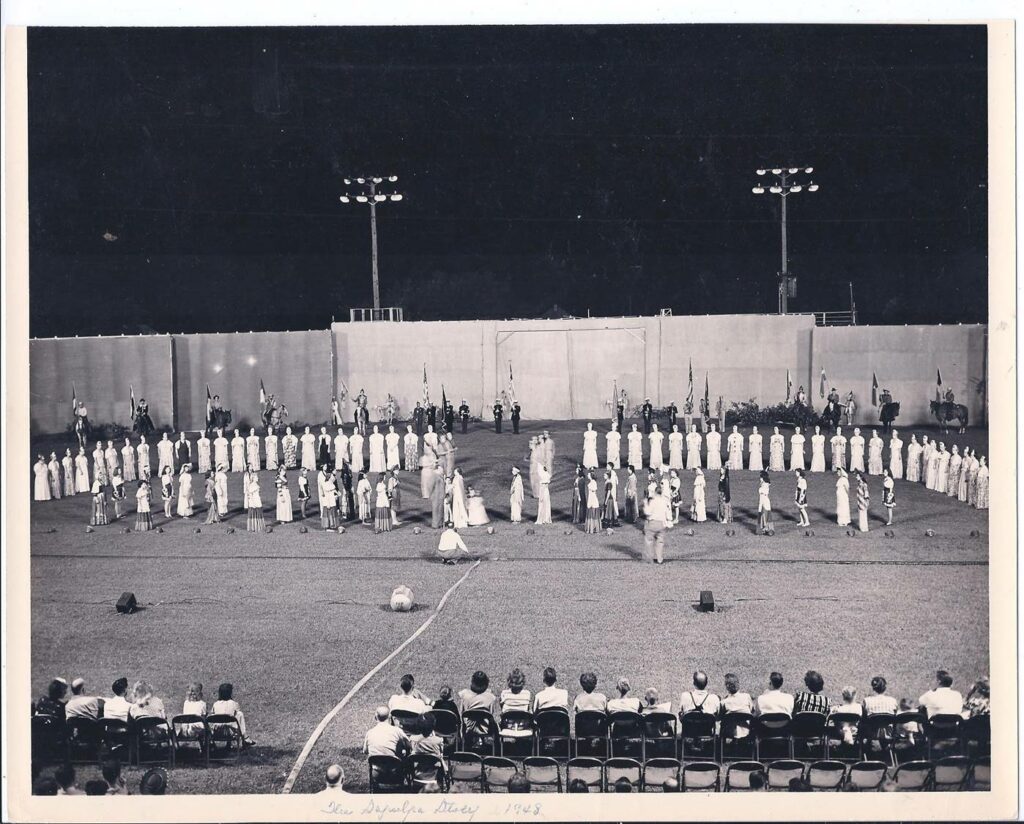
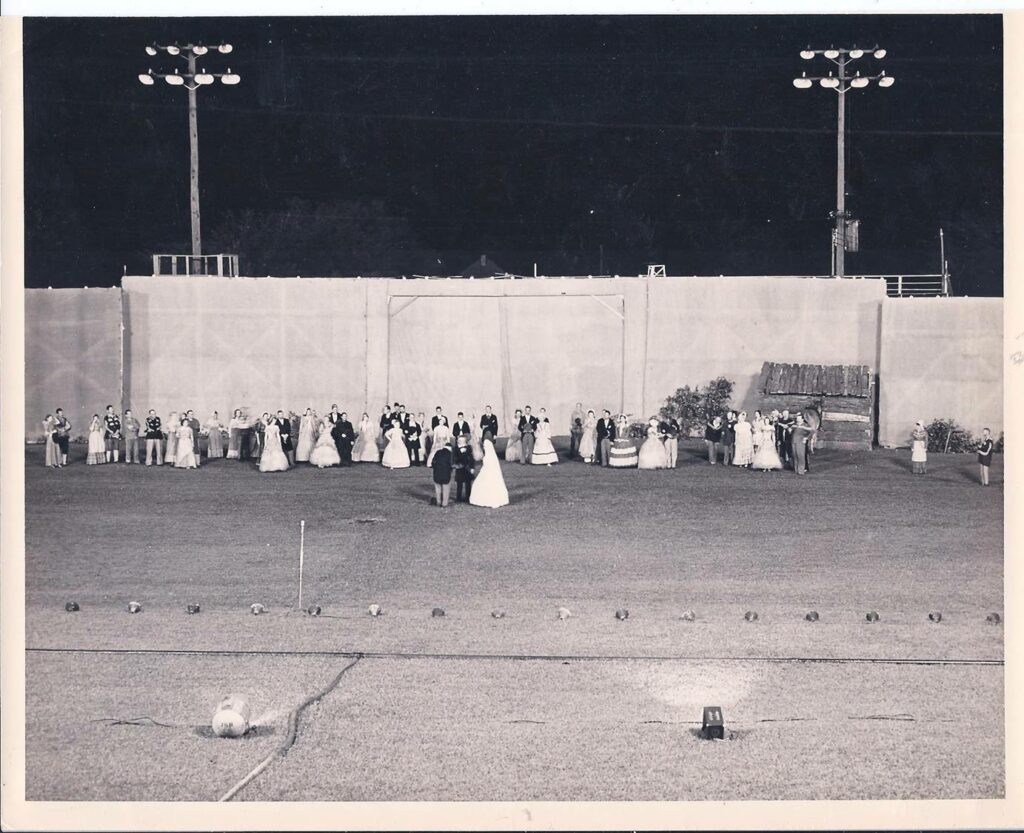
In 2011, a new Sapulpa school, Holmes Park Elementary, combined Washington and Woodlawn Elementary schools. “The entryway is the centerpiece of the building, with stained glass and colored tiles made by the now-closed Frankoma Pottery, a Sapulpa landmark.” Another landmark “was taken apart, stone by stone, numbered and then put back together and now serves as the entryway to the playground area.” The stones belonged to the Holmes Park archway.
(Sapulpa Herald, October 29, 1927, November 12, 1927, September 28, 1929, October 23, 1931 ; Sapulpa High School Yearbooks 1922-1929; Tulsa World, August 23, 2011).


